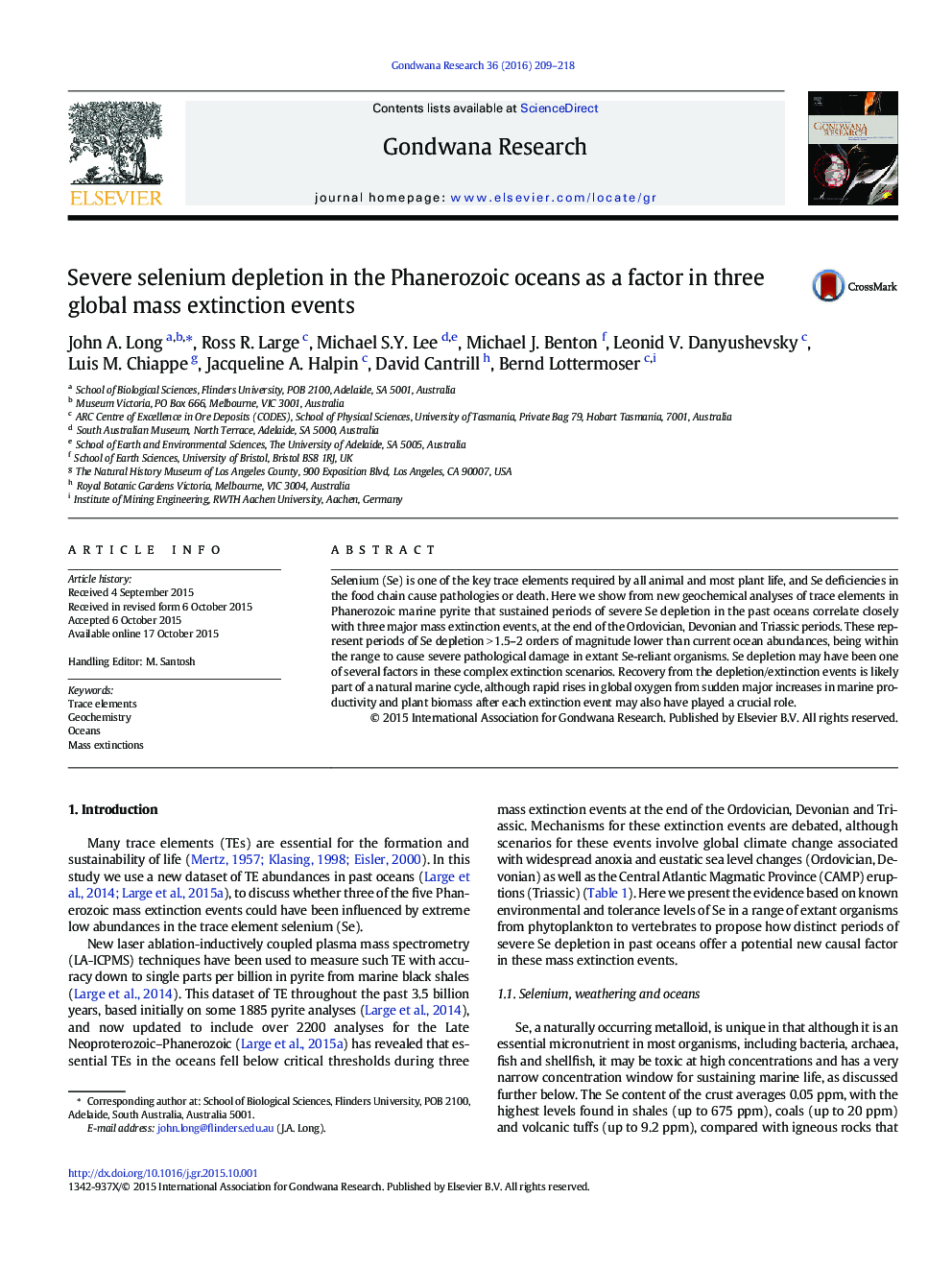| Article ID | Journal | Published Year | Pages | File Type |
|---|---|---|---|---|
| 4726627 | Gondwana Research | 2016 | 10 Pages |
•Sustained severe Se depletion in the past oceans correlates closely with three major mass extinction events.•These represent periods of Se depletion > 1.5-2 orders of magnitude lower than current ocean levels.•Se depletion may have thus been one of several factors in these complex extinction scenarios.
Selenium (Se) is one of the key trace elements required by all animal and most plant life, and Se deficiencies in the food chain cause pathologies or death. Here we show from new geochemical analyses of trace elements in Phanerozoic marine pyrite that sustained periods of severe Se depletion in the past oceans correlate closely with three major mass extinction events, at the end of the Ordovician, Devonian and Triassic periods. These represent periods of Se depletion > 1.5–2 orders of magnitude lower than current ocean abundances, being within the range to cause severe pathological damage in extant Se-reliant organisms. Se depletion may have been one of several factors in these complex extinction scenarios. Recovery from the depletion/extinction events is likely part of a natural marine cycle, although rapid rises in global oxygen from sudden major increases in marine productivity and plant biomass after each extinction event may also have played a crucial role.
Graphical abstractFigure optionsDownload full-size imageDownload as PowerPoint slide
